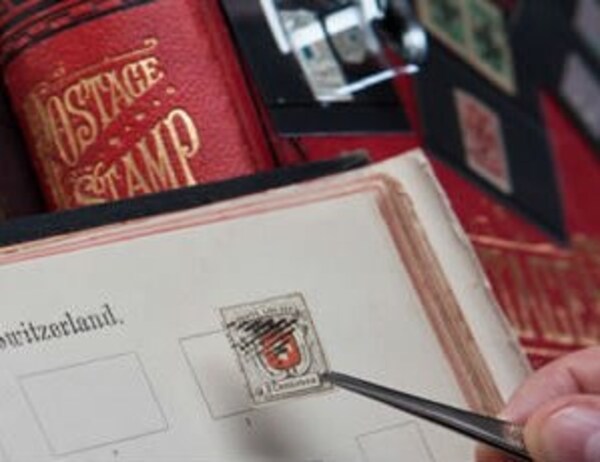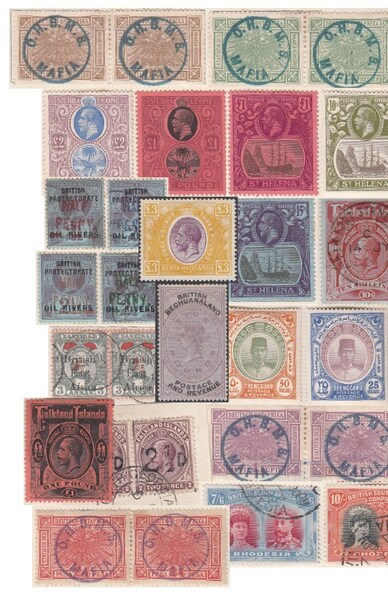Last month I discussed the various ways in which collectors make personal contact with the stamp trade, through retail shops, fair circuits and auctions. I also touched briefly on the more sociable aspects of the hobby and mentioned how the earliest clubs and societies gradually came into being. I firmly believe that, while it’s possible to follow the hobby in complete isolation, you do not get the full benefit from philately unless you belong to at least one club, and preferably several.
Stamp clubs come in all sizes and, if not shapes, certainly character. At the grass roots, there are clubs in most towns of a reasonable size, the members residing in the area. Meetings are held on a regular basis, usually from September till May, and usually fortnightly, although some meet every week and a few meet once a month. In the larger towns and cities there are generally several clubs to pick and choose from. In the city where I live, for example, there are two major philatelic societies which meet every Tuesday and Thursday respectively, together with at least half a dozen clubs in the suburbs or adjoining towns which meet fortnightly. Some hardy souls belong to both of the major societies as well as one or more of the suburban clubs and at least two dedicated enthusiasts of my acquaintance manage to attend meetings most evenings throughout the week!
Although most philatelic societies meet in the evenings, a few are beginning to hold meetings in afternoons or at weekends. This probably reflects the ageing membership where a high proportion of collectors are now retired and can more readily attend an afternoon meeting. By the same token, older people are not so keen in coming out to meetings on dark winter evenings. In some areas a switch from evening to afternoon meetings has been dictated by the desire to arrest declining attendance, and this has proved to be very successful.
The keynote of local stamp clubs is informality. The syllabus may have a few outside speakers, generally notable philatelists whose displays are both edifying and entertaining; but a high proportion of the programme is generated from within, either individual talks and displays from the more experienced members, or members’ nights where everyone has the chance to join in. Six Sheets or Sixpence was a popular stand-by in my younger days; with the march of inflation this seems to have been replaced by Five Sheets or Fifty Pence, though few clubs now hold such meetings where you are penalised if you don’t participate.
More often, members’ nights are given a particular focus – a letter of the alphabet, for instance, or a topic such as Postcards or Airmail which is guaranteed to generate a wide interest. The essential character of local clubs is that there should be something there for everyone, and club secretaries strive to arrange a syllabus that caters to all interests and collecting levels, with a good mix of traditional philately, thematic displays and postal history.
These local clubs and societies are generally affiliated to regional associations or federations. While Scotland has its own association and the federations in South Wales and Wessex transcend county boundaries, most are organised on a county basis. They organise annual conventions or congresses with inter-club competitions which provide collectors with the first rung on the ladder to national or international exhibiting. They usually publish a regular newsletter and also provide a pool of speakers willing to travel to other societies within the region.
A century ago, organised philately in the United Kingdom was very much London orientated. Manchester had the first philatelic society outside the metropolis, followed by the Scottish Philatelic Society in Edinburgh (1893), but by the turn of the century clubs were springing up all over the provinces. In 1909 Manchester became the venue for the first Philatelic Congress of Great Britain, an event which is held annually to the present day in various parts of the country and, incidentally, has produced enough material, in the way of souvenir covers, labels, sheetlets, postcards and postmarks, to make a formidable collection in its own right.
At the other end of the spectrum are the great national societies, such as the Royal Philatelic Society of London, founded in 1869, which has a worldwide membership and is unique (in the UK at any rate) in having its own permanent premises, at 42 Devonshire Place. Back in 1899 when teenage Fred Melville was refused membership of this august society because of his youth he responded by founding the Junior Philatelic Society. Junior only in the sense of being younger than the ‘Royal’, it eventually changed its name to reflect the fact that it catered to collectors of all ages, and is now known as the National Philatelic Society. It actually has a much larger membership than its elder brother and holds its meetings on Saturdays at the British Philatelic Centre from September to June. The great national societies hold meetings on much the same basis as the purely local clubs, the chief difference being in the calibre of the displays and talks, although it should be emphasised that local talent is often of a very high standard and, conversely, the ‘big guns’ of philately often give talks to local societies as well.
All of these clubs, great and small, offer the widest possible coverage of the hobby at all levels. Increasingly, however, in recent years with the trend away from general, whole-world collecting towards more specialised philately, there has arisen the specialist society or study circle. Not so many years ago, societies organised on a nation-wide basis for the benefit of collectors of a particular country or topic were very few and far between, but now it seems as if there are almost as many clubs of this type as there are local societies. The have several features in common: they are national or even international in character and rely mainly on postal or electronic media for communication between members, although many of them also hold meetings once or twice a year, usually coinciding with one or other of the major national philatelic exhibitions.
Even in this category there may be societies catering to specific interests. Thus the Philatelic Society of Great Britain derives its membership from people who have a specific interest in British stamps, but then there are separate organisations, such as the British Decimal Stamps Study Circle, the Meter Stamp Study Group, the British Postmark Society and even the GB Decimal Stamp Book Study Circle which are much more sharply focused.
Nowadays there are clubs for collectors specialising in virtually every country in the world, from the Andorran Philatelic Study Circle to the West Africa Study Circle. There are societies catering to collectors of postal stationery, airmails, military mail, TPO and Seapost and revenue stamps, even clubs for devotees of posting boxes and postal mechanisation.
For students of postal history there are the Postal History Society and the Society of Postal Historians, as well as several groups concentrating on the postal history of particular areas and even specific counties (such as Cornwall or Lancashire and Cheshire). And if there isn’t yet a club catering to your own particular interests, why not start one? An open letter to the various stamp magazines inviting a response from like-minded individuals is how many of the existing societies got off the ground in the first place.
Most local clubs and probably all of the specialist societies operate an exchange packet, a system that enables all members to add to their collections with the minimum of expense. Participants mount their unwanted or surplus material in special booklets, adding the price, and send them to the club’s packet secretary who makes up a packet or box which then goes on rotation to the other members, who remove the stamps they want and send their remittances to the secretary. The secretary then settles up with the contributors, deducting his operating expenses and a percentage that goes to the club funds. This system works particularly well in the case of the specialist societies for only material of mutual interest is included. In the local society packets, however, you may find everything and anything; but while most of the material may be of little or no interest to you, there is always bound to be that tempting bargain or long-sought stamp – even if you are way down the list of the recipients.
Many clubs also operate an auction, once or twice a year, a suitable method of disposing of large lots and bulky items. And some clubs have an annual bourse, perhaps even inviting along one or two local dealers, while other societies provide some time at each meeting for members to swap stamps and covers on a purely informal basis. A few clubs even pay some attention to the more social aspects, with an annual dinner or even club outings, either to the postal sorting and delivery office or to places of more general interest.
Truly, there is much, much more to philately than merely sticking stamps in an album.


 General
General
 General
General
 General
General